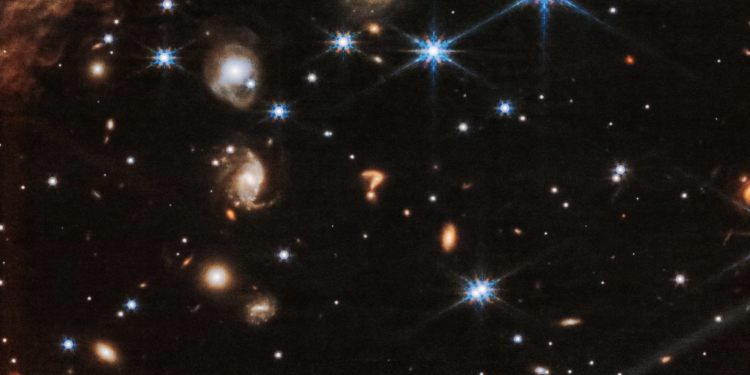Thanks to the unparalleled capabilities of the James Webb Space Telescope (JWST), we now have a window into the very beginnings of the universe, revealing ancient galaxies that existed only 300 million years after the Big Bang. But these early galaxies are raising questions that could reshape how we understand the universe itself.
A New View of the Universe with JWST
The JWST, launched in December 2021, is the most powerful space telescope ever built, allowing scientists to observe the universe in unprecedented detail. One of its most groundbreaking findings is the discovery of the earliest known galaxies—galaxies so distant that their light has taken billions of years to reach us. In essence, JWST allows us to look back in time, showing us how these galaxies appeared shortly after the birth of the universe.
What makes these findings particularly interesting is the unexpected brightness of many early galaxies. According to existing models of galaxy formation, such brightness should take much longer to develop, given the limited time for stars to form in such large numbers after the Big Bang. These galaxies also host actively growing black holes at their centers, further suggesting that they matured far more rapidly than current theories predict.
The Role of Cosmology in Understanding Early Galaxies
Our current understanding of the universe is based on the ΛCDM (Lambda Cold Dark Matter) model of cosmology. This model integrates three key components: visible matter (like stars and planets), cold dark matter, and dark energy. Together, these components explain the universe’s expansion, the cosmic microwave background (CMB), and the formation of galaxies over time.
The discovery of these early, bright galaxies might challenge this well-established model. Scientists are now investigating whether these galaxies indicate a need to adjust our understanding of how gas turns into stars or how black holes and supernovae regulate galaxy growth.
New Theories and Early Galaxies
One intriguing possibility is that star formation in the early universe was far more intense than previously thought, with rapid, “bursty” periods of star creation. Another explanation could be that these galaxies had lower amounts of galactic dust, which made them appear brighter to our telescopes.
There’s also the possibility that early dark energy—a theoretical force that decayed shortly after the Big Bang—could have played a role in shaping these galaxies. This early dark energy could explain some discrepancies in the age of the universe, such as the Hubble tension, which refers to different estimates of the universe’s expansion rate.
Redefining the Early Universe
JWST’s ability to capture detailed images and high-resolution spectra in the near-infrared spectrum is a game-changer for observing these early galaxies. Over the last two years, JWST has identified galaxies formed as early as 200–500 million years after the Big Bang, giving scientists a deeper understanding of galaxy formation.
Despite their small size compared to modern galaxies, these early galaxies are still incredibly efficient at forming new stars. They are capable of doubling their stellar content in just 100 million years—a feat that takes our Milky Way about 25 billion years to accomplish.
Are These Galaxies “Breaking” the Universe?
While some early reports suggested that these findings could “break” the universe by challenging existing cosmological models, further research has shown that a range of physical phenomena can explain these galaxies. More accurate observations revealed that initial estimates of their distances were too high, and in some cases, black holes, rather than stars, were responsible for much of the light emitted by these galaxies.
As JWST continues its mission, it will provide more refined data to help scientists tweak their models and unlock more secrets about the early universe. These findings are not rewriting the laws of cosmology just yet, but they are prompting deeper questions about how galaxies formed and evolved in the universe’s infancy.
The JWST’s discoveries are just the beginning of a new era in astronomy. As we continue to observe the universe with greater clarity, we are likely to encounter even more surprises. The early universe holds countless secrets that are only now beginning to be uncovered. Each new discovery brings us closer to understanding our cosmic origins—and perhaps even revising what we thought we knew about the universe itself.











